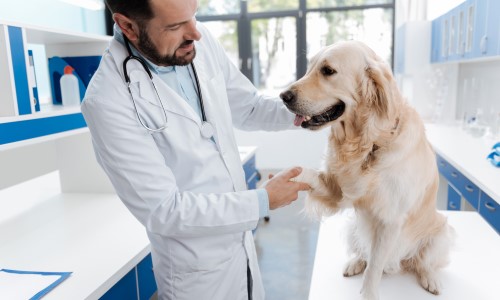Pets Need Fire Safety Too: Suppression and Detection Requirements for Animal Facilities
When there are no local requirements, alarm dealers should turn to NFPA 150, “Fire and Life Safety in Animal Housing Facilities Code,” to keep animals safe.

Over centuries of civilization, mankind has formed a unique bond with dogs, cats and other animals.
From time to time these precious family members need either go in for veterinary treatments or be boarded for a while.
Depending on the state or local jurisdiction of the animal hospital or boarding facility, there may be requirements calling for the installation of an automatic fire suppression or detection system.
In 2016, California, for example, passed into law a requirement that pet boarding facilities must have either a fire alarm system or a fire suppression sprinkler system. This was a follow-up to a law in the state that required these systems in pet stores that housed animals overnight.
The bill, SB 945, was authored by state Sen. Bill Monning and passed through both the California Senate and Assembly without any negative votes.
The law includes many requirements for the protection and wellbeing of animals that are left overnight at a facility. The verbiage covering installation of a fire alarm system is very open: A fire alarm system that is connected to a central reporting station that alerts the local fire department in case of fire.
Moreover, the law contains no guidelines and to what level of detection is to be provided, where it is to be provided or what is to be provided. NFPA 72, “National Fire Alarm and Signaling Code,” does not assist, as this is an installation standard.
The two fire codes in the United States — the International Fire Code and NFPA 1 — have no requirements, nor does NFPA 101, “Life Safety Code.”
Animal Facilities Code Outlines Requirements
So where should an alarm dealer turn to for assistance in keeping our beloved animals safe when they’re away from home? Take a look at NFPA 150, “Fire and Life Safety in Animal Housing Facilities Code,” with the 2019 edition being the most current.
This code might not be adopted by a state or local jurisdiction, but it does provide requirements, which could be followed for the protection of these occupancies.
Chapter 9 of NFPA 150 contains the requirements for detection, alarm and communication systems. The code does include references to both NFPA 72 as well as NFPA 70, “National Electrical Code,” regarding how a system should be installed.
Specific details can be found within section 9.3.2, Signal Initiation:
9.3.2.1 Where required by other sections of this code, actuation of the fire alarm system shall occur by any or all of the following means of initiation but shall not be limited to such means:
- Manual fire alarm initiation
- Automatic detection
- Extinguishing system operation
Manual stations are required to be located at all exits. Depending on the category of the facility, smoke detection may be required as well.
Chapter 6, Animal Housing Categories, lists eight categories of animal housing:
- Category 1, animal health care
- Category 2, horse facilities
- Category 3, research
- Category 4, reserved
- Category 5, exhibition/public viewing
- Category 6, general board and care
- Category 7, agriculture
- Category 8, emergency shelters
A zoo, for instance, falls under Category 5. A barn would be Category 7 facility. Mr. Ed lived in a Category 2 space. Category 1 is for pet hospitals, while pet boarding facilities are Category 6.
Alarm Activation, Signal Transmission Addressed
The fire detection requirements for a Category 1 facility is a fire alarm system in accordance with Chapter 9. In addition to the manual stations, an automatic detection system shall be installed throughout the facility.
Chapter 9 makes it clear that this is to be done with detectors and not smoke alarms. Carbon monoxide (CO) detectors are also to be installed where there is fuel-burning appliances or equipment.
If you do work in both animal hospitals and buildings that provide boarding, note that the requirements for Category 1 and Category 6 facilities are identical.
Notification of an alarm activation shall be through notification appliances, per NFPA 150. The code does allow, with the approval of the authority having jurisdiction (AHJ) the use of either a presignal system or positive alarm sequence. The code also allows with the approval of the AHJ the use of visual signals only in the areas where the animals may be housed.
Signals of an alarm activation are to be transmitted through either an auxiliary system, central station, remote supervising station or proprietary supervising station, in accordance with NFPA 72.
While not every state has mandated requirements for the protection of animals from fire, facility stakeholders even in states that do not have requirements are requesting that a fire detection system be installed. If your company should receive a request to provide detection within such an occupancy and there are no local requirements, NFPA 150 is a good source to turn to for guidance.
If you enjoyed this article and want to receive more valuable industry content like this, click here to sign up for our FREE digital newsletters!

Security Is Our Business, Too
For professionals who recommend, buy and install all types of electronic security equipment, a free subscription to Commercial Integrator + Security Sales & Integration is like having a consultant on call. You’ll find an ideal balance of technology and business coverage, with installation tips and techniques for products and updates on how to add to your bottom line.
A FREE subscription to the top resource for security and integration industry will prove to be invaluable.








